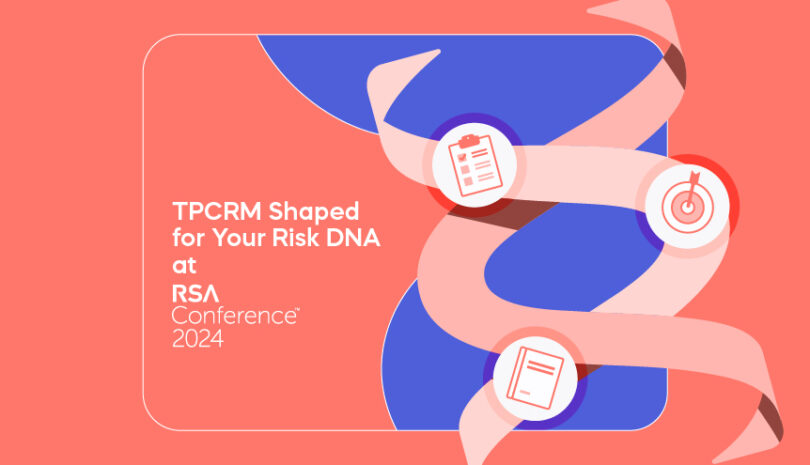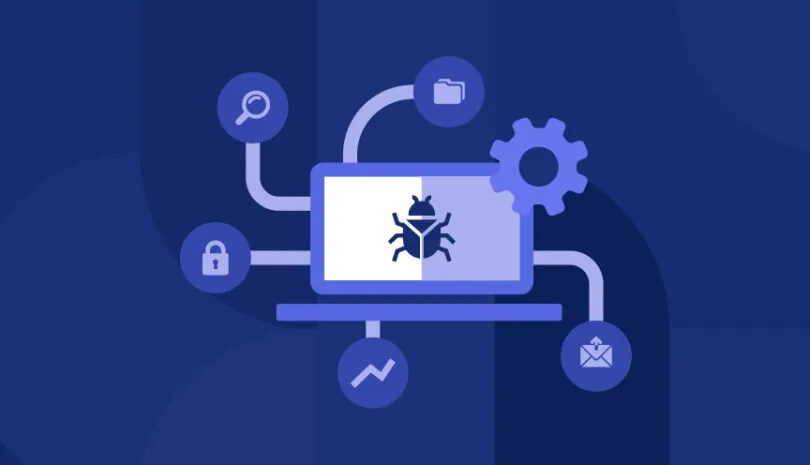As requirements to manage SOCs increase to keep up with the volume and complexity of threats, organizations are expected to turn to MSSPs for help managing their cybersecurity threats. This investment is expected to increase from $36 billion this year to $76 billion in 2029. At a time in which organizations suffer from a shortage in cybersecurity staff, MSSPs solutions help by offering a plethora of services while spreading the costs across a number of clients to help them defend against a variety of modern-day threats. However, you need to conduct due diligence when integrating an MSSP into your IT infrastructure, as you would with any other third-party. Without the proper precautions, these solutions can present security risks instead of defending against them.
What Are MSSPs?
MSSPs are managed security service providers that offer monitoring and management services related to cybersecurity. Many IT experts have partnered with MSSPs in the past, or plan to work with them in the future. As organizations understand more and more about the importance of risk mitigation, MSSPs are adding third-party security risk management services to their portfolios.
With the right MSSP, you can significantly improve your business’s cybersecurity, and possibly save money while doing it. But what exactly do MSSPs do, and how can you choose the right one for your company?
MSSPs Versus MSPs
An MSSP, or Managed Security Service Provider, focuses solely on providing security services, while an MSP, or Managed Service Provider, offers more general IT support. If an MSP offers cybersecurity services, they are usually less focused and specialized.
For example, MSSP services may include risk assessments, management of security operations, firewall management, intrusion detection, vulnerability scanning and patch management. In contrast, MSPs deliver network, infrastructure, application, cloud services and data backup and recovery.
Another significant difference between them is that while MSSPs operate a security operations center (SOC), MSPs operate a network operations center (NOC). A SOC allows the MSSP to provide 24-7 security services such as monitoring and incident response, while a NOC enables MSPs to manage their client’s operations.
Typical Pillars of MSSPs
Let’s start by looking at the typical service offerings of MSSPs. Each MSSP is different, offering a different selection of services and expertise. However, these are some of the commonalities you’ll find:
- Onsite consulting. Most MSSPs begin their relationship with an onsite consultation where the MSSP performs a comprehensive review of your existing security architecture. This is especially important for new businesses or those that haven’t had a robust security strategy in the past. After this consultation, the MSSP may recommend key changes or advise on which services will be most important for the organization going forward. Regular audits may follow in the future.
- Security perimeter management. MSSPs typically handle perimeter management for the client’s network. Within this category is a host of different services, including installing, updating and maintaining products such as firewalls, email and your virtual private network (VPN). Your company should have security infrastructure in place to ward off the majority of attacks while your MSSP ensures that these security measures are sufficient or need adjustments. They may also be responsible for setting up things like email filtering and traffic filtering.
- Cloud security. MSSPs can help organizations secure their cloud environments, whether they are multi-cloud or hybrid cloud solutions that include a combination of cloud and on-premise solutions. This can include securing cloud infrastructure, data encryption, threat detection and response, and meeting specific compliance requirements related to cloud security.
- Security monitoring. Your MSSP will typically provide managed security monitoring on a regular basis. In other words, they’ll be responsible for observing traffic patterns and user activity, and flagging unauthorized behavior. Anomalies could be an indication of a malicious hack, a denial of service (DoS) attack or a similarly destructive event; it’s your MSSP’s responsibility to notice them before it’s too late.
- Incident response. If your company is the victim of a malicious attack, you’ll need an MSSP to take action as quickly as possible. If you respond quickly and efficiently, you can often mitigate the damage—or even shut down the incident entirely. MSSPs provide an outsourced incidence response team that has an understanding of your organization, its internal process and policies, and how it might best respond at the time of an attack.
- Penetration testing. While incident responsiveness is important, it’s even better to prevent incidents from occurring in the first place. That’s why most MSSPs offer penetration testing services to their clients. With penetration testing, MSSPs will attempt to simulate attacks and try to find vulnerabilities within the security perimeter. If vulnerabilities are found, they will put together a plan to correct them.
- Compliance monitoring. MSSPs may also offer compliance monitoring services, such as providing event logs for changes and intrusions, implement relevant security controls and generate audit reports. Many organizations lack the resources to manage and meet compliance requirements on their own.
The Benefits of MSSPs
The most obvious benefit, and the central motivator for most companies, is the promise of better security. Unless you have a robust, well-trained in-house IT team, working with an MSSP will likely provide you access to better products and services designed to keep your company’s infrastructure secure.
Other benefits include:
- Simplified compliance. Along with defending against increasing cybersecurity threats, organizations are expected to stay up-to-date with evolving regulatory requirements. Many organizations are subject to multiple compliance requirements. For example, they might need to meet both regulations regarding the geographic location of their customers (e.g. GDPR) and specific payment data privacy (e.g, PCI DSS) and health information security requirements (e.g., HIPAA).
- A proactive approach. MSSPs not only identify cybersecurity threats, but can offer organizations steps to remediate against those threats. They also have experience implementing different security best practices such as NIST Cybersecurity Framework (NIST CSF) for specific industries. Finally, they also are aware of the recent updates to regulations relevant to your organization, such as NIST Cybersecurity Framework 2.0.
- An additional layer of staff and resources. Many companies with in-house IT teams find they simply don’t have the staff members or resources necessary to discover and implement the most effective cybersecurity best practices. Accordingly, MSSPs provide a kind of optional extension; you can use MSSPs to expand the capabilities of your security staff. In addition, MSSPs often already have experience and know which types of cybersecurity best practices are the most effective.
- Lower costs. MSSPs can reduce business costs in a few different ways. First, you can often hire an MSSP for less than it would cost to hire and manage an in-house team of your own. MSSPs often work more efficiently, and offer much lower prices. Second, using an MSSP reduces the possibility of suffering an expensive breach; you could potentially save millions of dollars by improving your security infrastructure.
- A shift in focus. Working with an MSSP allows your organization, and especially your IT team, to change its focus. Rather than getting bogged down focusing on administrative tasks, you can shift your attention to security governance and other higher level issues.
- Flexibility in range of services provided. Most MSSPs are extremely flexible. They’re willing to offer a unique combination of products and services that fit your business, rather than forcing you into a stagnant package. You can work with an MSSP while your business is small and scale with them, and you can change your service plan whenever your business’s needs change.
- The ability to quickly adapt to the market. MSSPs are also highly motivated to stay up-to-date with the latest changes in the cybersecurity world. They’re constantly learning and fine-tuning their own approaches, and they’ll be willing to invest in new products, new services and new updates to keep you and your organization secure.
How MSSPs Pose a Third-Party Risk
Although MSSPs are beneficial in delivering cybersecurity services to their customers, it is important to remember that they are subject to the same security threats as any other third party. The vast majority of MSSPs have suffered a cybersecurity attack in recent years. In addition, failure to conduct proper risk management on your MSSP, as in any other third-party, can lead to legal consequences and heft fees and penalties.
For example, after Zoll Medical Corporation suffered a breach in 2018 that exposed private health information (PHI) of over 277,000 patients, it sued Barracuda Networks, an MSSP, for leaving a data port open in their own network. The open port enabled unauthorized access to Zoll’s email communications and PHI. Current compliance and security regulations allow companies to pursue legal claims with third parties and vendors, making it imperative for them to have a detailed customer agreement with their MSSPs that outline how their customers are protected and insured in the event of a data breach.
Organizations can also protect themselves against attacks on MSSPs by continually monitoring threats from all third parties, ensuring they adhere to relevant security and data privacy regulations, and prioritizing any threats posed by the MSSP and taking immediate steps to remediate them.
How Panorays Helps MSSPs Manage Third-Party Risk
While an MSSP can help you manage and improve your organization’s cybersecurity posture, it still doesn’t solve the problem of effectively managing your third parties. In fact, they can even pose a third-party threat themselves if their own cybersecurity practices are not continuously managed and monitored.
Panorays integrates with MSSPs and other cybersecurity solutions to reduce third-party risk by identifying early threat indications within the unique context of every relationship so that companies can proactively defend against the next breach from impacting their business.
The platform includes:
- Supply Chain Discovery and Mapping. Gain a deeper understanding of your threat landscape by detecting third to n-th party relationships, profiling vendors based on business impact and unique context, prioritizing your efforts based on the criticality of these relationships.
- Risk DNA Assessments. Get a holistic risk rating that combines internal and external assessments alone with risk appetite, business priorities, and compliance and regulations.
- Continuous Threat Detection. Receive alerts about early indications of breaches and vulnerabilities, prioritized according to business criticality.
- Remediation and Collaboration. Take preventative actions immediately with automated remediation steps, facilitating seamless collaboration with your third parties.
FAQs
-
An MSSP is a Managed Security Service Provider that organization use to outsource different cybersecurity services, such as intrusion protection systems (IPS), identity access management (IAM), privilege access management (PAM), patch management and threat intelligence.
-
The benefits of an MSSP include: increased security, additional staff and resources, the ability for your organization to shift its focus on security to other higher-value tasks, flexibility in the range of services they provide, the ability to quickly adapt to the market and lower costs.
-
The difference between MSSPs, or Managed Security Service Providers and MSPs, or Managed Service Providers is that MSSPs focus on security services while MSPs deliver a broader range of services related to IT and client operations.
-
MSSPs alone do not defend against third-party risk, but are focused on identifying risks and vulnerabilities within an organization’s services or infrastructure. However, when integrated into a third-party risk management solution, they can widen the scope of threats they defend against to include defense against third-party risk.



